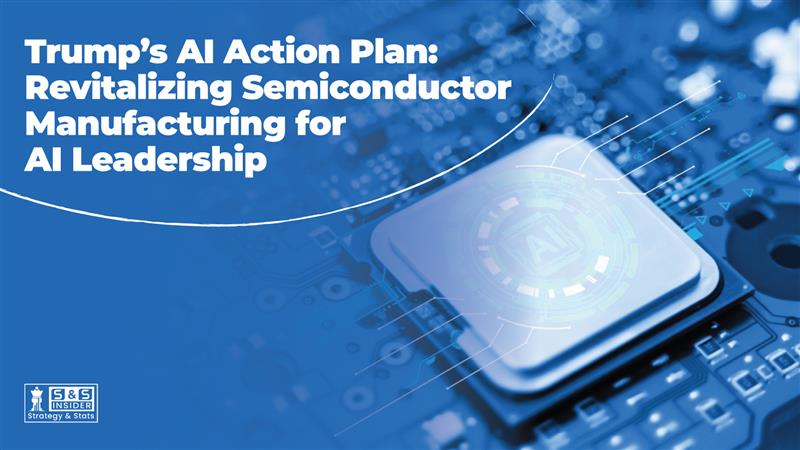
The AI Action Plan that Donald Trump released in July 2025 puts a lot of focus on restoring the semiconductor manufacturing industry in the U.S. This plan intends to build the important hardware base that the U.S. needs to lead the way in artificial intelligence by encouraging the development of chips in the U.S. and cutting down on dependency on foreign supply chains.
A big part of the goal is to push hard to build more semiconductor fabrication plants in the U.S. It wants to cut through red tape by making rules less strict, speeding up the process of getting permits, and making government property available for data centers and semiconductor manufacturers. These kinds of regulation changes are meant to make it easier for manufacturers to get started and cut down on their operating expenses, which will encourage more companies to invest in the U.S.
The strategy also makes the CHIPS Program Office's job easier by getting rid of needless bureaucratic restrictions. This will make sure that government funds for chip manufacturing initiatives have the biggest effect and that the industry responds quickly.
The idea makes it harder to export advanced AI processors and semiconductor parts to protect the U.S.'s technological edge. It puts in place steps to improve tracking and monitoring so that important technology doesn't go into the hands of geopolitical enemies. This means closing any gaps in present export restrictions and encouraging countries to work together to enforce export control rules that are in line with each other.
Trump's AI Action Plan calls for significant investment in high-security data centers that can handle defense and intelligence AI workloads, as well as the advancement of AI in semiconductors by making specialized chips. These facilities will adhere to strict security standards developed collaboratively by the government to protect against advanced cyber threats. Additionally, the energy infrastructure supporting these data centers and semiconductor fabs will be enhanced by integrating new energy sources and optimizing the grid to meet the substantial power demands of AI technology.
As semiconductors manufacturing in the U.S. is so expensive, the strategy encourages private sector participation by offering financial incentives and legislation that make the business environment more attractive. Reportedly, using threats of tariffs strategically helped get key chip makers to promise to set up or expand operations in the U.S., which made the U.S. supply chain more resilient and gave the U.S. more control over technology.
The strategy talks about how the U.S. can help set up global AI governance frameworks that encourage ethical AI use and innovation while fighting against authoritarian tendencies, especially from countries including China that are rivals. Working with cutting-edge AI developers and allies from other countries will focus on managing new risks and encouraging safe AI development globally.
Trump's AI Action Plan aims to make the U.S. the world leader in semiconductor manufacturing and AI technology by using streamlined rules, better export controls, infrastructure investment, and incentives for the private sector. This all-encompassing plan intends to protect the U.S. national interests, encourage new ideas, and keep the U.S. at the top of the technological ladder in the changing AI landscape.
Source – BISinfotech